A 1952 nickel without a mint mark originates from the Philadelphia Mint and typically holds face value ($0.05) when circulated. However, pristine uncirculated examples can command up to $4,750. The coin’s value depends primarily on condition, with over 63 million minted making it common except in high grades. Key factors affecting worth include circulated versus uncirculated status, overall condition, and scarcity of premium examples. To determine value: examine the coin’s condition, verify the absence of mint marks indicating Philadelphia origin, consult reliable price guides like NGC, and consider professional grading services for exceptional specimens to confirm grade and maximize potential value.
That worn 1952 nickel sitting in your change jar might be worth just five cents—or it could fetch thousands at auction. While most 1952 Jefferson nickels trade at face value, pristine examples have sold for $4,750, and rare error coins command even higher premiums. Understanding the factors that separate common pocket change from valuable collectibles can help you identify which coins deserve a closer look.
Understanding 1952 Jefferson Nickel Production
The United States Mint struck Jefferson nickels at three facilities in 1952, each leaving its distinctive mark on American coinage history. The Philadelphia Mint produced 63,988,000 nickels without any mint mark, making it the most common variety. Denver added a “D” mint mark to 30,572,000 pieces, while San Francisco contributed 20,572,000 coins stamped with an “S” mint mark on the reverse side near Monticello’s base.
These copper-nickel composition coins measure 21.2 millimeters in diameter and weigh 5 grams. The obverse features Thomas Jefferson’s left-facing profile designed by Felix Schlag, while the reverse displays his Virginia estate, Monticello. The metal content returned to the traditional 75% copper and 25% nickel blend after the wartime silver composition ended in 1946.
The relatively high mintage numbers mean circulated 1952 nickels remain abundant in the marketplace. Collectors can easily find worn examples for face value or slightly above. However, the substantial production volume actually works against collectors seeking investment-grade specimens—fewer people saved these common-date coins in pristine condition compared to lower-mintage years.
1952 Nickel Value by Mint Mark and Grade
| Grade | No Mint Mark (P) | D Mint Mark | S Mint Mark |
|---|---|---|---|
| Good (G-4) | $0.05 | $0.05 | $0.05 |
| Fine (F-12) | $0.10 | $0.10 | $0.10 |
| Extremely Fine (EF-40) | $0.25 | $0.30 | $0.35 |
| About Uncirculated (AU-50) | $0.75 | $1.00 | $1.25 |
| Mint State (MS-60) | $3.50 | $4.00 | $5.00 |
| Mint State (MS-63) | $8.00 | $12.00 | $15.00 |
| Mint State (MS-65) | $45.00 | $75.00 | $95.00 |
| Mint State (MS-66) | $175.00 | $285.00 | $425.00 |
| Mint State (MS-67) | $1,250.00 | $2,100.00 | $3,850.00 |
The Philadelphia no-mint-mark variety typically trades at the lowest prices across all grades due to its higher mintage. A circulated 1952 nickel in Good condition shows heavy wear with Jefferson’s profile barely visible and Monticello’s details worn smooth—these pieces rarely exceed face value. Moving up to Fine grade, where major design elements remain clear but show considerable wear, values inch up to ten cents.
The pricing landscape changes dramatically in uncirculated territory. An MS-65 specimen preserves sharp strike details with only minor contact marks visible under magnification. These gem-quality pieces start around $45 for Philadelphia strikes but climb to $95 for San Francisco examples. The jump to MS-66 nearly quadruples values, reflecting the scarcity of coins with minimal bag marks and strong eye appeal.
At the MS-67 level and above, population reports become crucial. NGC and PCGS combined have certified fewer than 200 1952-S nickels in MS-67 condition. A Heritage Auctions sale in January 2023 realized $4,080 for a 1952-S graded MS-67 with Full Steps designation, where the six architectural steps on Monticello show complete separation—a rarity caused by die wear during production.
Valuable 1952 Nickel Error Coins
Manufacturing mistakes during the 1952 production run created several profitable error varieties that collectors actively pursue. These minting anomalies occurred when dies malfunctioned, planchets were improperly prepared, or striking mechanisms failed to operate correctly.
Double Die Obverse Errors show doubling on Jefferson’s profile, the date, or the motto “IN GOD WE TRUST.” A strong double die displays clear separation between the original and duplicate images. PCGS-certified 1952 doubled die nickels have sold between $150 and $850 depending on doubling strength and overall condition. The most dramatic examples show doubling visible to the naked eye on the date numerals.
Off-Center Strikes happen when the planchet isn’t properly centered between the dies during striking. A 1952-D nickel struck 15% off-center with a full date visible sold for $285 at a Stack’s Bowers auction in 2022. Values increase proportionally with the off-center percentage, provided the date remains readable—a 40% off-center error with visible date commands $600 to $900.
Broadstrike Errors occur when the retaining collar fails to contain the planchet during striking, creating coins larger than the standard 21.2mm diameter. These spread-out nickels lack the raised rim normally present on properly struck pieces. A 1952 Philadelphia broadstrike measuring 23mm across realized $175 in MS-62 condition according to eBay’s sold listings from March 2023.
Clipped Planchet Varieties result from improperly cut blanks before striking. The missing metal creates a curved or straight-edged gap in the finished coin. A 1952-S nickel with a 10% curved clip achieved $245 at a Great Collections auction in February 2023. Larger clips approaching 25% of the coin’s surface push values toward $500 for high-grade examples.
Lamination Errors expose the coin’s internal metal layers when the copper and nickel alloy fails to bond properly. These peeling surface defects vary dramatically in size and appearance. Minor laminations barely affect value, but dramatic examples where large metal flakes separated command $75 to $200 depending on the affected area’s size and location.
Identifying Full Steps Designations
The Full Steps designation dramatically impacts 1952 nickel values, sometimes doubling or tripling the price of already-rare high-grade specimens. This specialized designation requires the six architectural steps leading to Monticello’s entrance to show complete, unbroken horizontal lines from one side to the other.
Achieving Full Steps required exceptional striking pressure and fresh dies. As production dies wore down from striking thousands of coins, the fine step details gradually weakened. Most 1952 nickels show partial steps with breaks or weakness in one or more lines. Only coins struck early in a die’s lifespan captured these intricate details fully.
Grading services designate Full Steps coins with “FS” or “5FS” (for five full steps) notations. An MS-65 1952-D nickel trades around $75 without Full Steps, but the same grade with Full Steps designation sells for $180 to $225. At MS-66 level, the premium expands further—$285 becomes $650 with Full Steps.
The 1952-S presents the greatest challenge for Full Steps collectors. Stack’s Bowers sold an MS-66+ FS specimen for $7,200 in August 2022, reflecting extreme scarcity. Population reports show NGC has certified only 14 examples of 1952-S nickels in MS-66 FS or higher grades across their entire grading history.
When examining your 1952 nickel for Full Steps, use a 5x to 10x magnifying loupe under good lighting. Each of the six horizontal lines must run completely across the steps without any breaks, even microscopic ones. The bottom step typically shows the most weakness, so focus your inspection there first.
Professional Grading and Authentication
Submitting your 1952 nickel for third-party grading makes financial sense when the coin appears to grade MS-64 or higher, or exhibits potential error characteristics. Professional grading costs range from $20 to $50 per coin depending on service level and turnaround time, so the coin’s potential value should justify this investment.
NGC and PCGS represent the industry’s most respected grading services. Both companies encapsulate authenticated coins in tamper-evident holders with grade labels, providing marketplace confidence. A raw 1952-S nickel might struggle to sell for $100 even in apparent MS-65 condition, but the same coin in a PCGS MS-65 holder readily achieves $95 to $110 from serious collectors.
The grading process examines strike quality, surface preservation, luster, and eye appeal. Graders assess the coin under magnification, identifying contact marks, scratches, or cleaning evidence that affect the final grade. A single deep scratch on Jefferson’s cheek can drop a potential MS-65 coin to MS-63, cutting value by more than half.
Authentication services also identify counterfeits and altered coins. Deceptive sellers sometimes add fake mint marks to Philadelphia strikes, creating fraudulent “D” or “S” varieties worth more money. Professional graders use microscopy and metallurgical analysis to detect these alterations, protecting buyers from expensive mistakes.
Submit coins directly through NGC or PCGS websites, or work with authorized dealers who offer submission services. Many dealers charge small fees for handling submissions but provide expertise in identifying which coins warrant grading. Before shipping valuable coins, photograph both sides and insure the package for the estimated value.
Where to Buy and Sell 1952 Nickels
Heritage Auctions and Stack’s Bowers handle the most significant Jefferson nickel transactions, regularly featuring high-grade 1952 specimens in their monthly sales. These established auction houses attract serious collectors willing to pay premiums for exceptional coins. Consignment typically requires coins valued above $500, with seller premiums around 10% of the hammer price.
Great Collections operates online-only auctions with no minimum consignment values, making it accessible for mid-range 1952 nickels worth $50 to $500. Their Sunday evening auctions attract thousands of active bidders. Seller fees start at 10% but decrease for higher-value lots.
eBay remains popular for buying and selling common-date 1952 nickels, though authentication challenges exist. Stick with sellers offering money-back guarantees and showing clear photographs of both sides. Completed listings reveal actual market prices—search “1952 nickel PCGS” or “1952-D NGC” to see what graded examples actually sell for versus asking prices.
Local coin shops provide immediate payment but typically offer wholesale prices 20% to 40% below retail values. This trade-off suits sellers prioritizing convenience over maximum return. Shops excel at buying circulated coins and mid-grade uncirculated pieces that don’t justify auction consignment expenses.
Reddit’s r/Coins4Sale community connects buyers and sellers directly, eliminating auction house fees. Members establish reputation through confirmed transactions tracked by the subreddit’s feedback system. This venue works well for 1952 nickels valued between $25 and $200, though payment protection requires using services like PayPal Goods and Services.
Maximizing Your 1952 Nickel’s Investment Potential
Focus collection efforts on acquiring graded specimens in MS-65 or higher conditions with strong eye appeal. These premium-quality coins appreciate faster than lower grades because supply remains permanently limited—damaged coins cannot become undamaged, and population reports show exactly how many survive in each grade.
The Full Steps designation deserves special attention for serious collectors. Only 3% to 5% of uncirculated 1952 nickels achieve this designation across all three mint marks. As Jefferson nickel collecting matures, knowledgeable buyers increasingly demand Full Steps examples, creating price premiums that continue expanding.
Store valuable nickels in archival-quality holders away from humidity and temperature fluctuations. Never clean coins—even gentle wiping with soft cloth creates microscopic scratches that dramatically reduce value. Professional grading services frequently downgrade otherwise high-quality coins to “Details” grades when cleaning evidence appears.
Build relationships with reputable dealers who can source specific dates and grades you need. Established dealers often contact preferred customers before listing exceptional coins publicly, giving you first opportunity to acquire key pieces. Attend regional coin shows where dealers bring fresh inventory and negotiate prices more freely than in formal shop settings.
Document your collection with high-resolution photographs and maintain detailed acquisition records including purchase prices, dates, and sources. This documentation proves provenance for future sales and helps track investment performance. Spreadsheet software easily tracks collection value as market prices fluctuate over time.
You may be interested:
- 1859 Indian Head Penny Coin Value Complete Errors List And No Mint Mark Worth Guide For Collectors
- 1911 V Nickel Coin Value Guide Complete Errors List And No Mint Mark Worth Today
- 1902 Dime Coin Value Complete Errors List With O S And No Mint Mark Worth Guide
- 1788 Quarter Coin Value Complete Guide Errors List And D S P Mint Mark Worth Revealed
- 1776 To 1976 Bicentennial Half Dollar Coin Value Complete Errors List And What Your D S And No Mint Mark Coins Are Actually Worth
- 1990 Penny Coin Value Errors List How D S And No Mint Mark Pennies Are Worth Thousands Of Dollars

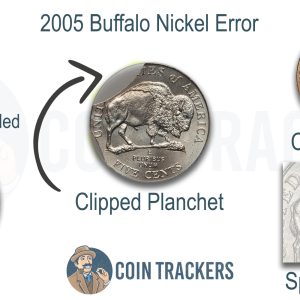
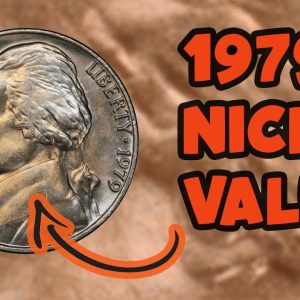
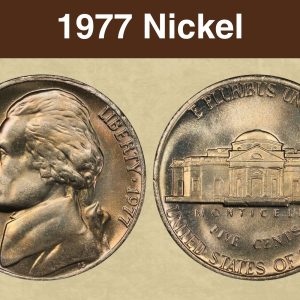
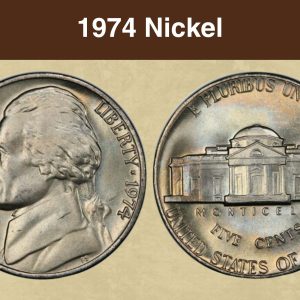
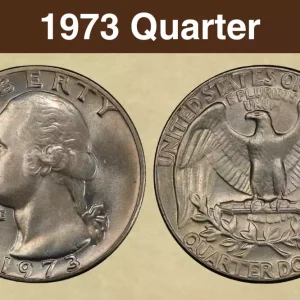
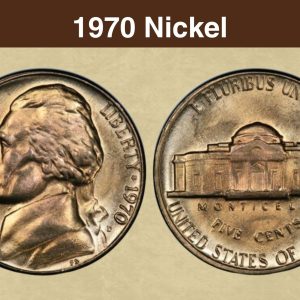
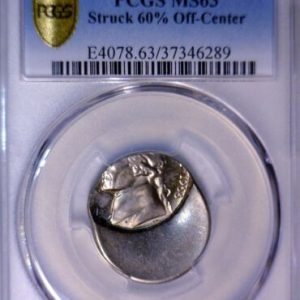
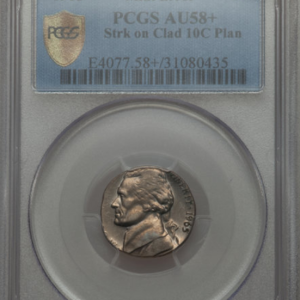
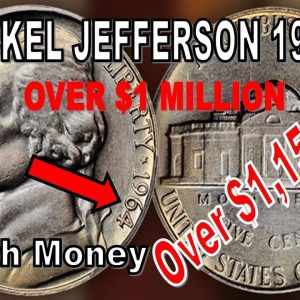
Is a 1952 nickel with no mint mark worth anything?
A 1952 nickel with no mint mark is a Philadelphia Mint coin and is generally worth its face value ($0.05) in circulated condition, but a pristine, uncirculated example can be worth up to $4750. Its value depends on its condition, with higher-grade coins in uncirculated condition commanding significantly higher prices.
What is the mintage of a 1952 S nickel?
Mintage: 20,572,000 Mint: San Francisco Composition: 75% copper, 25% nickel
What nickels to look for that are worth money?
Valuable nickels to look for include rare dates and mint marks like the 1913 Liberty Head, 1918/7-D Buffalo, and 1926-S Buffalo. Additionally, check for specific errors such as the 1955 “Double Die Reverse” (DDR) Jefferson, the 1942/1 “Overdate” Jefferson, or the 2005 “Speared Bison” Denver nickel. Other valuable categories include the 35% silver “War Nickels” from 1942–1945 and old Shield or Buffalo nickels minted before 1938.
What are error nickels to look for?
Key nickel errors to look for include doubled dies, where design elements are doubled due to die strikes, off-center strikes, where the coin is struck outside its intended position, and mint mark errors, such as doubled or missing mint marks. Other valuable errors are speared bison on 2005 nickels, the 1943 double die Jefferson nickel, and 1937-D Buffalo nickel three legs.